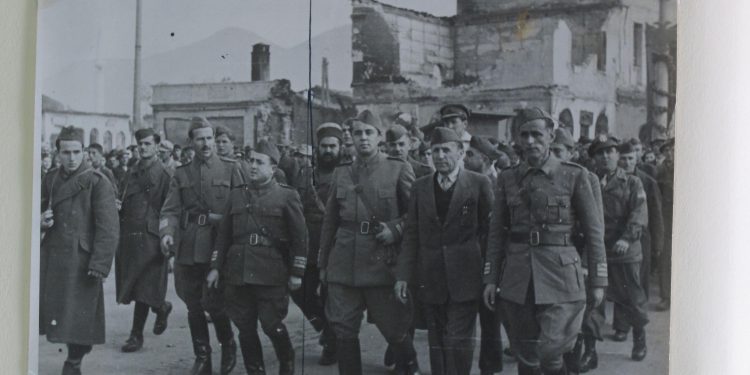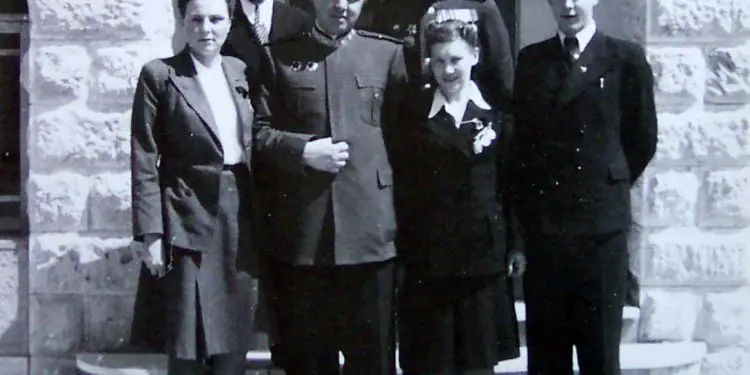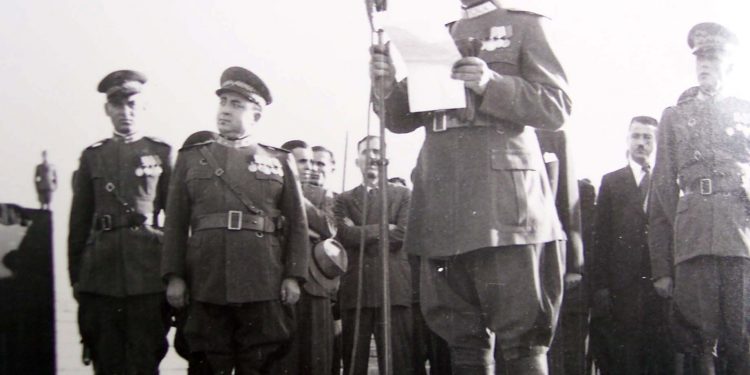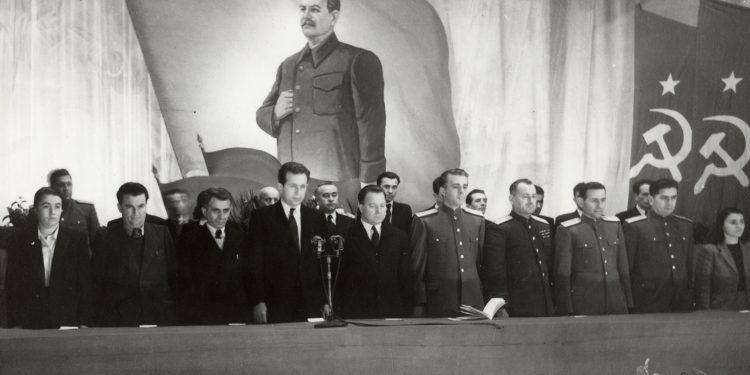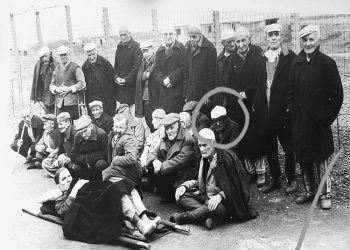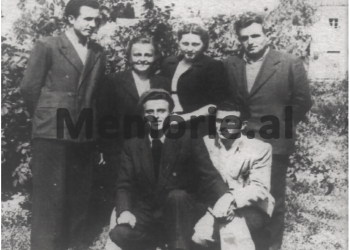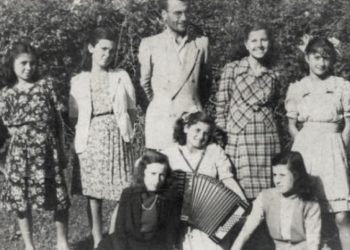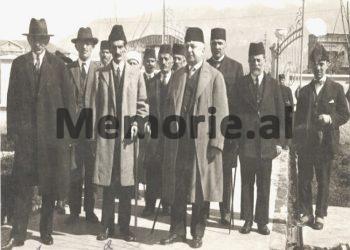Dashnor Kaloçi
Memorie.al publishes a list of 100 names of prominent personalities, as founders of the Communist Party of Albania since 1941, leaders of the Anti-Fascist National Liberation War as commanders and commissars, and later senior staff and functionaries of the Communist regime. Enver Hoxha, who over the years was accused of being “enemies of the people and criminals” and sentenced to death, died in investigative cells and prisons, or suffered years of political persecution in the prisons and internment camps of that regime. …
During its 50 years of existence, the Albanian Communist Party, then called the Party of Labor of Albania, tragically eliminated from its ranks almost all of the highest and most vocal exponents they had founded, or which had significantly contributed to the consolidation of its power. All these characters who were physically assaulted or eliminated by the Communist regime of Enver Hoxha had devotedly served until the very last moment, this very party, and its leader, Enver Hoxha, who with a pencil drop deciding which ones to keep living, and which ones not! The contribution of these great personalities of Albanian Communism begins with the founding of the Communist Party on November 8, 1941, and then with the Anti-Fascist National Liberation War, to end with the period, usually in historiography of that time. time would also be labeled as the “socialist construction of the country” in 1944-1991. Ironically, the 100 characters on this list can even be described as the leaders of the Albanian Communist regime (at least a good part of them), who were well-educated in the most popular schools and academies. of the East or of the West in the 1930s and 40s of the last century and until 1961 in the countries of the Communist East, or as it was then called by official propaganda, as “People’s Democracies”. Some of these characters had helped Enver Hoxha in the struggles for the coming to power of the Party he led in war-torn Albania in 1943-1944, while others had helped him cement the roots of his absolute power in the hierarchy. of the Labor Party of Albania. While the third and final part would be the most tragic one, which zealously accompanied dictator Hoxha in the wake of his fierce 45-year rule in the country. And right at the end, this piece, without waiting, fell prey to its own monstrous crimes! Charges for them would be set in the dark corridors of the shady-heavy building that once had not only Tirana but the entire site of the Central Committee of the Albanian Labor Party, with their implementation being in charge of the Ministry of Internal Affairs. of its branches and numerous departments, the most prominent of which was the State Security, which Enver himself had regarded as the “sharp tip of the sword of the dictatorship of the proletariat”?! The paranoid nature of the Albanian Communist regime would label these unfortunates as “enemies of the people”, “traitors to the homeland”, “agents of the Yugoslav UDB, the Soviet KGB, the American CIA” of all sorts. other epithets of various kinds. But their only “fault” that they would only realize when they saw themselves in the dark cells of Investigators or Security, political camps and prisons or remote villages in internment, was that they had supported and served until At that moment Enver Hoxha’s power ?! Many remained loyal to the point that when they were sentenced to death and executed, they took the courage and courage to apologize to him, even writing letters from prison or internment where would declare him eternal faithfulness! Likewise another part of them, with the firing squad on their heads, would shout his name until the last few seconds, having some sort of “hope” that their ruler could forgive them! Unfortunately, that would not be the case. Because the model of the campaign of purges and eliminations that Enver Hoxha would carry out on his comrades, associates and colleagues was identical in copy to the Communist Party of the Soviet Union and personally to its leader, Joseph Visarionovich Stalin. This method was imported into official Tirana thousands of miles away from Moscow, where within its Kremlin walls its leaders “ate” each other and those who remained on top of it “ate” the next cut. The story of Albania’s Labor Party is tragically similar to its Soviet counterpart, a story of suffering and purges, a story of eliments and mysterious killings of its founders and mainstream members. Frighteningly, this method of rule after 1945 spread to all the communist states of the East, where of course even small Albania would absorb and adapt it to its model. And that would be because the very person who would export this model to the communist world, Joseph Visarionovich Stalin, would at the same time serve as a guide and an idol for the Albanian communist dictator, Enver Hoxha, with a list of purges of his close associates. , it’s hundreds. At this writing, Memorie.al brings the first 25 characters of this list of 100 names.
It follows from the past number
-
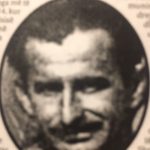 Vehip Demi, Communist and partisan with leadership functions in the Chameria area. After the war he carried out some tasks in the agit-prop sector, up to the Head of the Editorial Board at Radio Tirana. In 1956, at the Tirana Conference, he criticized the Bloc’s privileges and personally Nexhmije Hoxha. After that, the party was declared independent and interned in Vlora, where it died of poisoning (according to family members’ testimony) in the hospital in that city in 1957.
Vehip Demi, Communist and partisan with leadership functions in the Chameria area. After the war he carried out some tasks in the agit-prop sector, up to the Head of the Editorial Board at Radio Tirana. In 1956, at the Tirana Conference, he criticized the Bloc’s privileges and personally Nexhmije Hoxha. After that, the party was declared independent and interned in Vlora, where it died of poisoning (according to family members’ testimony) in the hospital in that city in 1957.
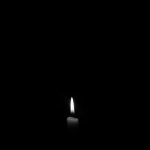 Sotir Vullkani, the oldest member of the Korça Communist Group since the period of the Zog Monarchy and a participant in the founding meeting of the SNP. After the war he served for some time as a background officer in Tirana with the rank of lieutenant colonel in the Ministry of Internal Affairs. He also worked in the prison and camp sector in 1953-1958, being appointed as commander of the Craftsman’s Workshop in Tirana, (one of the most notorious prisons in the capital). , and that same year his son Robert Vullkani was sentenced to 20 years in prison for attempted escape.
Sotir Vullkani, the oldest member of the Korça Communist Group since the period of the Zog Monarchy and a participant in the founding meeting of the SNP. After the war he served for some time as a background officer in Tirana with the rank of lieutenant colonel in the Ministry of Internal Affairs. He also worked in the prison and camp sector in 1953-1958, being appointed as commander of the Craftsman’s Workshop in Tirana, (one of the most notorious prisons in the capital). , and that same year his son Robert Vullkani was sentenced to 20 years in prison for attempted escape.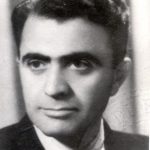 Xhavit Qesja, partisan of XXIII Brigade in Kruja-Mat area. After the war, Qesja was elected political commissar in the Tirana District Command. Then in 1947, he was elected Political Secretary of the SNC Central Committee for the districts of Shkodra and Berat. In 1955, he was sent to study in the Soviet Union, from where he returned the following year. He is also a member of the People’s Assembly until 1958. In 1957-1958 Xhavit Qesja serves as the Deputy Chairman of the Executive Committee of Elbasan. Dismissed from all posts following Enver Hoxha’s controversy following the US Congress of the USSR XX for the liberalization of political life in the country. He was exiled to the island of Zverneci and surveyed by the State Security until 1966. This year he was arrested and convicted of agitation and imprisonment. He is sent to Burrel Prison where he was twice re-enlisted and released from there after 1991. His wife Meriban Najden suffered internment with the children.
Xhavit Qesja, partisan of XXIII Brigade in Kruja-Mat area. After the war, Qesja was elected political commissar in the Tirana District Command. Then in 1947, he was elected Political Secretary of the SNC Central Committee for the districts of Shkodra and Berat. In 1955, he was sent to study in the Soviet Union, from where he returned the following year. He is also a member of the People’s Assembly until 1958. In 1957-1958 Xhavit Qesja serves as the Deputy Chairman of the Executive Committee of Elbasan. Dismissed from all posts following Enver Hoxha’s controversy following the US Congress of the USSR XX for the liberalization of political life in the country. He was exiled to the island of Zverneci and surveyed by the State Security until 1966. This year he was arrested and convicted of agitation and imprisonment. He is sent to Burrel Prison where he was twice re-enlisted and released from there after 1991. His wife Meriban Najden suffered internment with the children.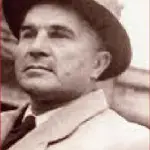 Koço Tashko, chairman of the Communist group of Korça, envoy of COMINTERN in Albania, participant in the founding meeting of the SNP in 1941. In 1943, precisely during the period of national liberation war, Koço Tashko was appointed by the General Staff of the National Liberation Army. as secretary of the National Liberation General Council. The liberation of Albania, 1945, finds him the secretary of the Constituent Assembly. In 1946-1947, Koco Tashko was appointed Albanian ambassador to Moscow. In 1947 he was appointed Deputy Minister of Foreign Affairs, who was in parallel with Hysni Kapo. In 1954 he was appointed ambassador of Albania to Sofia, but after a year, then in 1955, as usual in such cases, he was returned from Sofia to be appointed to the party’s Central Committee apparatus as chairman of the Audit and Audit Committee. party. He continued in office until 1960, when Enver Hoxha’s political attacks on him began, accusing him of being a Soviet agent. for which he came specifically to his homeland. He did internment for 8 years, starting from Çorushi of Mallakastra and continuing in many areas of Albania. After eight years of internment, at the age of 68, he was jailed for 10 years in the high-security prison at the time in Burrel, which he released only in 1980, when he was 78 years old. Six years later, exactly in 1984, when he was 85, Koco Tashko died in misery in the Adriatic village of Kurbin.
Koço Tashko, chairman of the Communist group of Korça, envoy of COMINTERN in Albania, participant in the founding meeting of the SNP in 1941. In 1943, precisely during the period of national liberation war, Koço Tashko was appointed by the General Staff of the National Liberation Army. as secretary of the National Liberation General Council. The liberation of Albania, 1945, finds him the secretary of the Constituent Assembly. In 1946-1947, Koco Tashko was appointed Albanian ambassador to Moscow. In 1947 he was appointed Deputy Minister of Foreign Affairs, who was in parallel with Hysni Kapo. In 1954 he was appointed ambassador of Albania to Sofia, but after a year, then in 1955, as usual in such cases, he was returned from Sofia to be appointed to the party’s Central Committee apparatus as chairman of the Audit and Audit Committee. party. He continued in office until 1960, when Enver Hoxha’s political attacks on him began, accusing him of being a Soviet agent. for which he came specifically to his homeland. He did internment for 8 years, starting from Çorushi of Mallakastra and continuing in many areas of Albania. After eight years of internment, at the age of 68, he was jailed for 10 years in the high-security prison at the time in Burrel, which he released only in 1980, when he was 78 years old. Six years later, exactly in 1984, when he was 85, Koco Tashko died in misery in the Adriatic village of Kurbin.-
 Maqo Çomo, In 1943 he joined the Communist Party. In 1944 he was commissar of the 15th Brigade and in 1945 he was a member of the political section of the 3rd division. After 1945, he was deputy commissioner and member of the political section of the Directorate of Public Protection. In December 1947 he was a member of the Political Section for the 1st Infantry Division. In July 1948 he was appointed inspector for military offices in the Political Directorate of the Army. In January 1950 he was appointed chief of the organization’s branch of the Political Directorate of the Army. In February 1951 he was appointed head of the political branch of the Ministry of Internal Affairs, being at the same time general director of the People’s Police. In 1952-53, the portfolio was issued by the Minister of State Control. In 1953 he was Deputy Minister of Collections. In 1955 he married Liri Belishova and from that year until 1960 he was Minister of Agriculture. On November 1, 1960, he was dismissed from the plenum of the Central Committee of the Labor Party. He was appointed director of an agricultural enterprise in Goranxi, Gjirokastra. He is then interned in Kuci and Progronat. In the years 1962 – 1967 he was interned in the camp of Zvernec. While there, he was arrested on August 23, 1967. On November 3, he pleaded guilty to aggravated propaganda and undermining popular power, being sentenced to 10 years in prison by the Supreme Court Criminal College. On the eve of his release, on September 24, 1976, he was arrested at Burrel Prison where he was serving his sentence. On August 31, 1977, he was sentenced by the Burrel District Court to 10 years in prison. After leaving prison on August 1, 1987, he joined the family by interning in Cerrik from 1987 to 1991. Died in Tirana on January 23, 1998.
Maqo Çomo, In 1943 he joined the Communist Party. In 1944 he was commissar of the 15th Brigade and in 1945 he was a member of the political section of the 3rd division. After 1945, he was deputy commissioner and member of the political section of the Directorate of Public Protection. In December 1947 he was a member of the Political Section for the 1st Infantry Division. In July 1948 he was appointed inspector for military offices in the Political Directorate of the Army. In January 1950 he was appointed chief of the organization’s branch of the Political Directorate of the Army. In February 1951 he was appointed head of the political branch of the Ministry of Internal Affairs, being at the same time general director of the People’s Police. In 1952-53, the portfolio was issued by the Minister of State Control. In 1953 he was Deputy Minister of Collections. In 1955 he married Liri Belishova and from that year until 1960 he was Minister of Agriculture. On November 1, 1960, he was dismissed from the plenum of the Central Committee of the Labor Party. He was appointed director of an agricultural enterprise in Goranxi, Gjirokastra. He is then interned in Kuci and Progronat. In the years 1962 – 1967 he was interned in the camp of Zvernec. While there, he was arrested on August 23, 1967. On November 3, he pleaded guilty to aggravated propaganda and undermining popular power, being sentenced to 10 years in prison by the Supreme Court Criminal College. On the eve of his release, on September 24, 1976, he was arrested at Burrel Prison where he was serving his sentence. On August 31, 1977, he was sentenced by the Burrel District Court to 10 years in prison. After leaving prison on August 1, 1987, he joined the family by interning in Cerrik from 1987 to 1991. Died in Tirana on January 23, 1998.
-
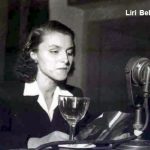 Liri Belishova, One of the main leaders of the SNP, in the city of Tirana, and later partisan with functions at the Anti-Fascist Youth Organization. After 1944, he held senior party duties as an MP in the People’s Assembly, a member of the Political Bureau and Secretary of the Central Committee on Propaganda, being a close associate of Enver Hoxha. In 1960 he was accused of being anti-Soviet and dismissed from office. Until 1991, she suffered long internment in Cerrik, Elbasan, along with her husband Maqo Chomo and her family.
Liri Belishova, One of the main leaders of the SNP, in the city of Tirana, and later partisan with functions at the Anti-Fascist Youth Organization. After 1944, he held senior party duties as an MP in the People’s Assembly, a member of the Political Bureau and Secretary of the Central Committee on Propaganda, being a close associate of Enver Hoxha. In 1960 he was accused of being anti-Soviet and dismissed from office. Until 1991, she suffered long internment in Cerrik, Elbasan, along with her husband Maqo Chomo and her family.
-
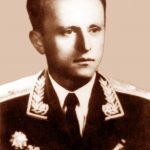 Hilmi Seiti, partisan and exponent of LANC for Shkodra region. After the war, he holds leadership positions in the Division of People’s Defense. In the late 40s until the early 50s, he is the Director of Political Intelligence (State Security Outside Albania). In 1952 he was appointed Head of the Department of Internal Affairs in Shkodra. He is promoted to Major-General, and is regarded as one of the top MIA figures of those years. But in 1960, he was summoned to the premises of the Ministry of Interior in Tirana, where, in the presence of Hysni Kapo, Minister Hazbiu proposes to become the head of a group of Cham conspirators who would be sacrificed for the benefit of Albanian-Soviet relations. Seiti does not accept and exits the Ministry demo to come to Shkodra. He died in April 1960, under suspicious circumstances in the backyard of this city’s Party Committee. In his magnificent burial, Minister of the Interior Kadri Hazbiu also delivered a speech. After 1990, the family and many of his former colleagues have testified that Seattle was poisoned.
Hilmi Seiti, partisan and exponent of LANC for Shkodra region. After the war, he holds leadership positions in the Division of People’s Defense. In the late 40s until the early 50s, he is the Director of Political Intelligence (State Security Outside Albania). In 1952 he was appointed Head of the Department of Internal Affairs in Shkodra. He is promoted to Major-General, and is regarded as one of the top MIA figures of those years. But in 1960, he was summoned to the premises of the Ministry of Interior in Tirana, where, in the presence of Hysni Kapo, Minister Hazbiu proposes to become the head of a group of Cham conspirators who would be sacrificed for the benefit of Albanian-Soviet relations. Seiti does not accept and exits the Ministry demo to come to Shkodra. He died in April 1960, under suspicious circumstances in the backyard of this city’s Party Committee. In his magnificent burial, Minister of the Interior Kadri Hazbiu also delivered a speech. After 1990, the family and many of his former colleagues have testified that Seattle was poisoned.
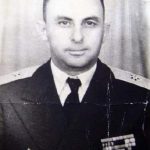 Teme Sejko, a partisan in the Chameria Battalion, also a battalion commissar in the 1st Brigade. Major-General, Vice Admiral of the Naval Combat Fleet. With the approval of Enver Hoxha, he was arrested in 1960 and forced to admit that he was the head of a conspiracy group (all of Cham origin) and, in collaboration with the Greeks, Yugoslavs, Italians and the US VIth Fleet, wanted to topple. popular power in Albania.After a public trial, he is sentenced to death but fails to execute. In June 1961, he is taken to the Marikaj Residence(the base of the State Security). Sejko, dies after macabre torture exercised by senior MUP exhibitors themselves.
Teme Sejko, a partisan in the Chameria Battalion, also a battalion commissar in the 1st Brigade. Major-General, Vice Admiral of the Naval Combat Fleet. With the approval of Enver Hoxha, he was arrested in 1960 and forced to admit that he was the head of a conspiracy group (all of Cham origin) and, in collaboration with the Greeks, Yugoslavs, Italians and the US VIth Fleet, wanted to topple. popular power in Albania.After a public trial, he is sentenced to death but fails to execute. In June 1961, he is taken to the Marikaj Residence(the base of the State Security). Sejko, dies after macabre torture exercised by senior MUP exhibitors themselves.
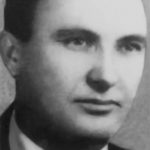 Taho Sejko, Partisan in the Chameria Battalion. After the war he worked for several years at the State Planning Commission and Head of the Economic Editorial Board at Zeri Peoples newspaper. In 1956, after the Tirana Conference, he was declared an anti-party person and transferred as Director of the Shkodra Park, where he worked until 1960 when he was arrested on charges of being a member of the hostile Cham Group headed by his brother, General -Major, Tema Sejko. Although it is said that he was shot dead in 1962, his son Hector casts shades of doubt. After 1991, he declared in the press, a version of his father’s elimination. According to him, he died during the torture, beating the wall with his head.
Taho Sejko, Partisan in the Chameria Battalion. After the war he worked for several years at the State Planning Commission and Head of the Economic Editorial Board at Zeri Peoples newspaper. In 1956, after the Tirana Conference, he was declared an anti-party person and transferred as Director of the Shkodra Park, where he worked until 1960 when he was arrested on charges of being a member of the hostile Cham Group headed by his brother, General -Major, Tema Sejko. Although it is said that he was shot dead in 1962, his son Hector casts shades of doubt. After 1991, he declared in the press, a version of his father’s elimination. According to him, he died during the torture, beating the wall with his head.
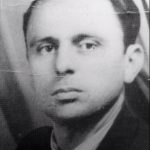 Tahir Demi, partisan with leadership functions at the Chameria Battalion. Chairman of the Elbasan Executive Committee, and Albania’s envoy to KNER. In 1960, he was demonstratively arrested in his office as he was conducting a meeting, accused of being one of the key members of a conspiracy led by Vice-Admiral of the Navy, Major-General Teme Sejkon, aimed at toppling communist regime. He is sentenced to death and executed the following year, along with several other members of the Cham Group.
Tahir Demi, partisan with leadership functions at the Chameria Battalion. Chairman of the Elbasan Executive Committee, and Albania’s envoy to KNER. In 1960, he was demonstratively arrested in his office as he was conducting a meeting, accused of being one of the key members of a conspiracy led by Vice-Admiral of the Navy, Major-General Teme Sejkon, aimed at toppling communist regime. He is sentenced to death and executed the following year, along with several other members of the Cham Group.
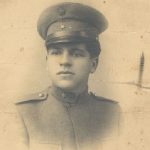 Kristo Budo, partisan and exponent of political leadership, Secretary of the Dibra District, and Head of the Internal Affairs Branch there. Secretary General of the Council of Ministers for years. After being shot by his father for accusing him of being a Greek agent, in 1961, they were arrested and subjected to inhumane torture by an investigator from top State Security officials (who left their mark until the end of their lives). with 10 years in prison, which they committed in Burrel. Afterwards, he lives in exile on Zverneci Island.
Kristo Budo, partisan and exponent of political leadership, Secretary of the Dibra District, and Head of the Internal Affairs Branch there. Secretary General of the Council of Ministers for years. After being shot by his father for accusing him of being a Greek agent, in 1961, they were arrested and subjected to inhumane torture by an investigator from top State Security officials (who left their mark until the end of their lives). with 10 years in prison, which they committed in Burrel. Afterwards, he lives in exile on Zverneci Island.
-
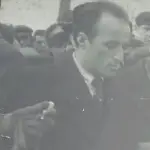 Zenel Islami, a student of Migraine and a real character of his writings. Partisan in the Puka district. Graduated in Philosophy in Moscow, he is appointed First Secretary in Puka and Lezha, Chairman of the Committee in Elbasan. Targeted by State Security to alleviate class warfare. On July 9, 1960, he was found dead with a bullet wound in a house in the village of Labinot, where he had gone to attend an Army holiday. His burial takes place in Shkodra where only family members are allowed. After 1961, his wife Drita Gjylbegu (sister of People’s Hero Naim Gjylbegu) was deported with hard labor until 1991.
Zenel Islami, a student of Migraine and a real character of his writings. Partisan in the Puka district. Graduated in Philosophy in Moscow, he is appointed First Secretary in Puka and Lezha, Chairman of the Committee in Elbasan. Targeted by State Security to alleviate class warfare. On July 9, 1960, he was found dead with a bullet wound in a house in the village of Labinot, where he had gone to attend an Army holiday. His burial takes place in Shkodra where only family members are allowed. After 1961, his wife Drita Gjylbegu (sister of People’s Hero Naim Gjylbegu) was deported with hard labor until 1991.
-
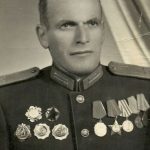 Haxhi Hajdari, commander of the first Partisan gang in the district of Shkodra. Commander of the border sector in the MIA for Shkodra district. Member of the People’s Assembly until 1963. He opposed the collectivization of the peasantry in the mountainous areas and called for the office of Mehmet Shehu to be removed. After being targeted by the State Security for being arrested, he demonstratively escapes and hides in a cave in the highlands of Rrjolli. After several days of searching, it is deployed by several thousand armed troops of the Reconnaissance and Tracking Forces. He is eliminated by artillery fire in the cave where he was sheltered, along with a relative in March 1963 (the day of the official State Security holiday).
Haxhi Hajdari, commander of the first Partisan gang in the district of Shkodra. Commander of the border sector in the MIA for Shkodra district. Member of the People’s Assembly until 1963. He opposed the collectivization of the peasantry in the mountainous areas and called for the office of Mehmet Shehu to be removed. After being targeted by the State Security for being arrested, he demonstratively escapes and hides in a cave in the highlands of Rrjolli. After several days of searching, it is deployed by several thousand armed troops of the Reconnaissance and Tracking Forces. He is eliminated by artillery fire in the cave where he was sheltered, along with a relative in March 1963 (the day of the official State Security holiday).
-
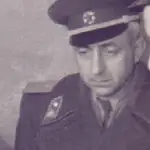 Halim Xhelo, Partisan and exponent of the Communist Movement for Vlora. After the war, he carried out a number of functions in the Ministry of Internal Affairs, as director of various branches in the same department. From 1955 until his dismissal and arrest in 1966 he was the Director of Army Security at the MIA. He writes an anonymous letter from Beqir Balluk’s office, Enver Hoxha, accusing him of removing ranks in the Armed Forces. Following the discovery of his offense, he is arrested demonstratively in Vlora by the Deputy Minister of Defense and the Deputy Minister of Interior who went there by military aircraft. Sentenced to 25 years in prison and serving time in Burrel prison. He writes a second letter to Enver Hoxha, this time openly accusing him of torturing him and others in this prison. He killed himself in his cell in 1974.
Halim Xhelo, Partisan and exponent of the Communist Movement for Vlora. After the war, he carried out a number of functions in the Ministry of Internal Affairs, as director of various branches in the same department. From 1955 until his dismissal and arrest in 1966 he was the Director of Army Security at the MIA. He writes an anonymous letter from Beqir Balluk’s office, Enver Hoxha, accusing him of removing ranks in the Armed Forces. Following the discovery of his offense, he is arrested demonstratively in Vlora by the Deputy Minister of Defense and the Deputy Minister of Interior who went there by military aircraft. Sentenced to 25 years in prison and serving time in Burrel prison. He writes a second letter to Enver Hoxha, this time openly accusing him of torturing him and others in this prison. He killed himself in his cell in 1974.
-
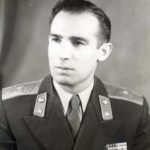 Zoi Themeli, partisan and leader of the Communist Movement in Korça district. From 1945 to 1952 he was the Head of the Shkodra Interior Branch. Then in 1952-1955 he was Director of the State Anti-Revolutionary Groups branch. Promoted Lieutenant General, and Member of Parliament in the People’s Assembly. Then in 1955-1966 he was Director of Political Intelligence at the Ministry of Internal Affairs. In 1966-1967, he served as First Secretary of the Party’s Central Committee for the Dibra district. He was arrested the same year on charges of racketeering and a taciturn supporter of Kochi Xoxes and his methods. He was exiled to the villages of Lushnja where he suffered great misery until 1991.
Zoi Themeli, partisan and leader of the Communist Movement in Korça district. From 1945 to 1952 he was the Head of the Shkodra Interior Branch. Then in 1952-1955 he was Director of the State Anti-Revolutionary Groups branch. Promoted Lieutenant General, and Member of Parliament in the People’s Assembly. Then in 1955-1966 he was Director of Political Intelligence at the Ministry of Internal Affairs. In 1966-1967, he served as First Secretary of the Party’s Central Committee for the Dibra district. He was arrested the same year on charges of racketeering and a taciturn supporter of Kochi Xoxes and his methods. He was exiled to the villages of Lushnja where he suffered great misery until 1991.
-
 Gjin Marku, member of the Communist Group of Shkodra, delegate to the SNP founding meeting, a member of the Provisional Political Bureau in 1944. Political Commissar of the Berat District, Commander of the 7th Battalion and 5th Division. Graduated with Gold Medals at the Military Academy of the General Staff “Voroshilov” of Moscow, Member of the People’s Assembly, “People’s Hero”, Major General, Deputy. chief of the General Staff. Sentenced in 1967 to 25 years and dies at Burrel Prison in 1986. Although suffering from an incurable illness and completing his sentence for a month, his former subordinate, Ramiz Alia, did not sign the decree on his release from prison.
Gjin Marku, member of the Communist Group of Shkodra, delegate to the SNP founding meeting, a member of the Provisional Political Bureau in 1944. Political Commissar of the Berat District, Commander of the 7th Battalion and 5th Division. Graduated with Gold Medals at the Military Academy of the General Staff “Voroshilov” of Moscow, Member of the People’s Assembly, “People’s Hero”, Major General, Deputy. chief of the General Staff. Sentenced in 1967 to 25 years and dies at Burrel Prison in 1986. Although suffering from an incurable illness and completing his sentence for a month, his former subordinate, Ramiz Alia, did not sign the decree on his release from prison.
-
 Fadil Paçrami, Born in Shkodra on May 25, 1922. Attended Shkodra Gymnasium between 1935 and 1938, in 1937 he joined the Communist Group of Korça. He continued his medical studies at the University of Bologna in Italy, where he attended only his first academic year (1941-’42). In 1943 he joined the Albanian Communist Party, and in the same year was appointed a member of the Tirana District Youth Committee. In February 1944 he was elected a member of the Party Committee for Tirana. In 1945 he was elected a member of the Front Secretariat. In 1946 – 1947 he served as Deputy Minister of Education. From January 1947 to November 1948 he was director of the archaeological museum. From November 1948 to June 19, 1958 he was the editor-in-chief of the Voice of the People newspaper. From 1952 to 1973 he was a member of the Central Committee of the Labor Party. From 1958 to December 15, 1960 students at the party school in Moscow. In 1960 – 1965 he was the propaganda director of the PP Central Committee. In 1965 – 1966 he was Minister of Culture and Arts. From 1966 to April 11, 1973 secretary of the PP Committee, meanwhile from 1970 to 1973 he was also Speaker of the People’s Assembly. The legislature abolished the mandate of the deputy since 1947 and refused to give an account to his constituents. On September 15, 1973 the People’s Assembly dismissed him from his office. He was arrested on October 20, 1975 as an “enemy of the people” and sentenced to agitation and propaganda, his imprisonment lasting until March 17, 1991. The sentence was served at Burrel and Greater Kosovo Prison near Elbasan. He was released on March 17, 1991, two weeks before the first pluralistic elections.
Fadil Paçrami, Born in Shkodra on May 25, 1922. Attended Shkodra Gymnasium between 1935 and 1938, in 1937 he joined the Communist Group of Korça. He continued his medical studies at the University of Bologna in Italy, where he attended only his first academic year (1941-’42). In 1943 he joined the Albanian Communist Party, and in the same year was appointed a member of the Tirana District Youth Committee. In February 1944 he was elected a member of the Party Committee for Tirana. In 1945 he was elected a member of the Front Secretariat. In 1946 – 1947 he served as Deputy Minister of Education. From January 1947 to November 1948 he was director of the archaeological museum. From November 1948 to June 19, 1958 he was the editor-in-chief of the Voice of the People newspaper. From 1952 to 1973 he was a member of the Central Committee of the Labor Party. From 1958 to December 15, 1960 students at the party school in Moscow. In 1960 – 1965 he was the propaganda director of the PP Central Committee. In 1965 – 1966 he was Minister of Culture and Arts. From 1966 to April 11, 1973 secretary of the PP Committee, meanwhile from 1970 to 1973 he was also Speaker of the People’s Assembly. The legislature abolished the mandate of the deputy since 1947 and refused to give an account to his constituents. On September 15, 1973 the People’s Assembly dismissed him from his office. He was arrested on October 20, 1975 as an “enemy of the people” and sentenced to agitation and propaganda, his imprisonment lasting until March 17, 1991. The sentence was served at Burrel and Greater Kosovo Prison near Elbasan. He was released on March 17, 1991, two weeks before the first pluralistic elections.
-
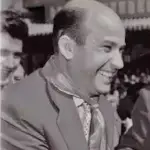 Todi Lubonja, in March 1942 in the presence of Tuk Jakova, Lubonja was elected to the Durres County Committee. Senior Communist Youth Officer and later on the party’s Culture and Art Bodies. Secretary of the Party Committee of Korça, First Secretary of the Central Committee of the Labor Youth Union of Albania. Director of the Albanian Radio and Television until 1972 when the 11th Festival of Song took place. After being discharged from all functions, in 1973, he was initially sent to the district of Lezha. In 1974, he was arrested and sentenced to prison in Burrel until 1991 along with his son, Fatos.
Todi Lubonja, in March 1942 in the presence of Tuk Jakova, Lubonja was elected to the Durres County Committee. Senior Communist Youth Officer and later on the party’s Culture and Art Bodies. Secretary of the Party Committee of Korça, First Secretary of the Central Committee of the Labor Youth Union of Albania. Director of the Albanian Radio and Television until 1972 when the 11th Festival of Song took place. After being discharged from all functions, in 1973, he was initially sent to the district of Lezha. In 1974, he was arrested and sentenced to prison in Burrel until 1991 along with his son, Fatos.
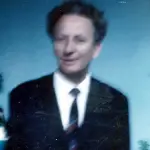 Dashnor Mamaqi, Communist and partisan with leadership functions, in the VI Brigade. Member of the People’s Assembly, a member of the Central Committee of the ASP and Minister of Education and Culture until 1974 when the so-called hostile groups began to strike. After being dismissed from all party and state functions, he is arrested and sentenced to 25 years in prison. Lives in the prison of Shkoll in Lezha in 1984. The family was interned in Selenica, Vlora, from where they could escape only after 1990.
Dashnor Mamaqi, Communist and partisan with leadership functions, in the VI Brigade. Member of the People’s Assembly, a member of the Central Committee of the ASP and Minister of Education and Culture until 1974 when the so-called hostile groups began to strike. After being dismissed from all party and state functions, he is arrested and sentenced to 25 years in prison. Lives in the prison of Shkoll in Lezha in 1984. The family was interned in Selenica, Vlora, from where they could escape only after 1990.
-
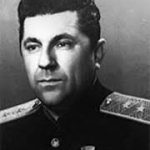 Beqir Balluku, Communist and commander of the guerrilla units of Tirana. In 1943 he was a member of the Communist Party and a member of the KP Central Committee. He was arrested in 1943 for a few months and on May 20, 1943, he was appointed commander of the Kruja-Ishem Partisan Battalion. On 18 September 1943 commissar of the 3rd Brigade and then commander of the 2nd Brigade. In 1944 he was commander of the operational staff of brigades 2, 9 and 20. In 1945 he was a member of the Special Court. In 1945 – 1948 he was deputy commander of the first corps, commander of the second corps, and commander of the rear commands in the general command and division commander. On January 28, 1948 he was appointed head of the Army Staff until 1950. He headed the Military Academy “Voroshilov” in Moscow. At the first SNP congress he was elected a member of the Political Bureau and in 1953 he became deputy minister of People’s Defense, a post he held until 1974. The following year he received the highest rank in Albania, that of General-Lieutenant. From 1946 Balluk was always a member of the People’s Assembly and from 1954 to 1974 Deputy Prime Minister. In 1960 he was appointed chairman of the Central Committee on Internally Displaced Persons, the Prime Minister. In July 1974 he was accused of organizing a military coup. He was arrested on December 16, 1974. He was sentenced to death for “treason against the homeland, agitation and propaganda, embezzlement of socialist property in great proportions, and abuse of official position.” He was shot dead on November 5, 1975, together with Petrit Dumen and Hito Çakon, in Tirana, and was buried in Vranisht, Vlora.
Beqir Balluku, Communist and commander of the guerrilla units of Tirana. In 1943 he was a member of the Communist Party and a member of the KP Central Committee. He was arrested in 1943 for a few months and on May 20, 1943, he was appointed commander of the Kruja-Ishem Partisan Battalion. On 18 September 1943 commissar of the 3rd Brigade and then commander of the 2nd Brigade. In 1944 he was commander of the operational staff of brigades 2, 9 and 20. In 1945 he was a member of the Special Court. In 1945 – 1948 he was deputy commander of the first corps, commander of the second corps, and commander of the rear commands in the general command and division commander. On January 28, 1948 he was appointed head of the Army Staff until 1950. He headed the Military Academy “Voroshilov” in Moscow. At the first SNP congress he was elected a member of the Political Bureau and in 1953 he became deputy minister of People’s Defense, a post he held until 1974. The following year he received the highest rank in Albania, that of General-Lieutenant. From 1946 Balluk was always a member of the People’s Assembly and from 1954 to 1974 Deputy Prime Minister. In 1960 he was appointed chairman of the Central Committee on Internally Displaced Persons, the Prime Minister. In July 1974 he was accused of organizing a military coup. He was arrested on December 16, 1974. He was sentenced to death for “treason against the homeland, agitation and propaganda, embezzlement of socialist property in great proportions, and abuse of official position.” He was shot dead on November 5, 1975, together with Petrit Dumen and Hito Çakon, in Tirana, and was buried in Vranisht, Vlora.
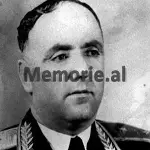 Peter Dume, partisan in the Kolonja district, Commander of the “Revenge” Battalion and 18th Attack Brigade. Graduated from the Frunze and Voroshilov Academies of the Soviet Union, Deputy Minister of Defense and Chief of the General Staff of the Army with the rank of Lieutenant General. Hero of the People, a member of the Central Committee of the SPL, a candidate for the Political Bureau and a Member of the People’s Assembly, until 1974 when he was accused of being one of the leading leaders of the Puchist Group in the Army. After the trial he was sentenced to death, and executed in 1975.
Peter Dume, partisan in the Kolonja district, Commander of the “Revenge” Battalion and 18th Attack Brigade. Graduated from the Frunze and Voroshilov Academies of the Soviet Union, Deputy Minister of Defense and Chief of the General Staff of the Army with the rank of Lieutenant General. Hero of the People, a member of the Central Committee of the SPL, a candidate for the Political Bureau and a Member of the People’s Assembly, until 1974 when he was accused of being one of the leading leaders of the Puchist Group in the Army. After the trial he was sentenced to death, and executed in 1975.
-
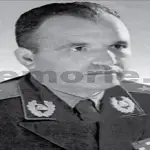 Hito Çako, Communist and Partisan in the 5th Brigade with leadership functions. Commander of Division I. Graduated from two Military Academies in the Soviet Union, Commander of the Naval War Fleet. Director of the Political Directorate of the Army with the rank of Lieutenant General and Deputy Minister of Public Defense. An MP in the People’s Assembly and a member of the SPL Central Committee until 1975 when he was sentenced to death and executed by firing after being accused of being one of the three leading leaders of the putsch group in the Army.
Hito Çako, Communist and Partisan in the 5th Brigade with leadership functions. Commander of Division I. Graduated from two Military Academies in the Soviet Union, Commander of the Naval War Fleet. Director of the Political Directorate of the Army with the rank of Lieutenant General and Deputy Minister of Public Defense. An MP in the People’s Assembly and a member of the SPL Central Committee until 1975 when he was sentenced to death and executed by firing after being accused of being one of the three leading leaders of the putsch group in the Army.
-
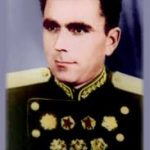 Rahman Parllaku, Communist and commander of Vlora guerrilla units, partisan and commander of the 5th Division who fought in Yugoslavia, Hero of the People. Deputy Minister of People’s Defense with the rank of Lieutenant-Colonel, a member of the Central Committee of the LLP and an MP in the People’s Assembly until 1974 when he was arrested and sentenced to 25 years in political prison on charges of being the No. 4 figure in the Puccist Group. in the Army, after Baluk, Dumes and Chakos. He served 15 years in the Burrel prison and was released only in 1991.
Rahman Parllaku, Communist and commander of Vlora guerrilla units, partisan and commander of the 5th Division who fought in Yugoslavia, Hero of the People. Deputy Minister of People’s Defense with the rank of Lieutenant-Colonel, a member of the Central Committee of the LLP and an MP in the People’s Assembly until 1974 when he was arrested and sentenced to 25 years in political prison on charges of being the No. 4 figure in the Puccist Group. in the Army, after Baluk, Dumes and Chakos. He served 15 years in the Burrel prison and was released only in 1991.
-
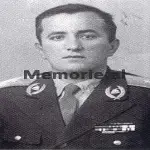 Halim Rramohito, Participated in national liberation war inside and outside state borders, up to Bosnia. During the war he performed the following duties: Deputy Commissar Battalion and youth officer of the Partisan V Brigade. Then in charge of Youth in the Partisan V Division. At the First Congress of the BRASH in August 1944 he was elected a member of the General Council of the BRASH. During the decades of liberation he worked in the military with various duties. In 1948 he was appointed Commissar of the Division. In September 1957, I was appointed military representative of the Republic of Albania to the Joint Command of the Warsaw Pact’s Military Forces, as well as military attaché in Moscow. Finished Academy “Frunze”. In 1966 he served as a Corps Commander, in 1970 he headed the state’s MKA (Air Defense) and in 1972 he was deputy chief of the Army’s Political Directorate. At the 4th Congress of the APL in 1961, he was elected a Candidate to the Central Committee of the ASP. At the 6th Congress of the ASP in 1971, he was elected a Member of the ASP Central Committee. From 1974 to 1990 he had suffered from the calvary of forced labor, internment and prison, including that of Burrel’s high security.
Halim Rramohito, Participated in national liberation war inside and outside state borders, up to Bosnia. During the war he performed the following duties: Deputy Commissar Battalion and youth officer of the Partisan V Brigade. Then in charge of Youth in the Partisan V Division. At the First Congress of the BRASH in August 1944 he was elected a member of the General Council of the BRASH. During the decades of liberation he worked in the military with various duties. In 1948 he was appointed Commissar of the Division. In September 1957, I was appointed military representative of the Republic of Albania to the Joint Command of the Warsaw Pact’s Military Forces, as well as military attaché in Moscow. Finished Academy “Frunze”. In 1966 he served as a Corps Commander, in 1970 he headed the state’s MKA (Air Defense) and in 1972 he was deputy chief of the Army’s Political Directorate. At the 4th Congress of the APL in 1961, he was elected a Candidate to the Central Committee of the ASP. At the 6th Congress of the ASP in 1971, he was elected a Member of the ASP Central Committee. From 1974 to 1990 he had suffered from the calvary of forced labor, internment and prison, including that of Burrel’s high security. -
 Sadik Bekteshi, Communist and political commissar of the first partisan gang of the district of Shkodra and of the XXVIIth Attack Brigade, Hero of the People. After the war ended, in February 1945, he was briefly appointed Chief of the Military Command of the General Command. He graduated from the Frunze Military Academy (1945-1950) and later the General Staff Academy “Voroshilov” (1954-1957) in Moscow. In 1969-1974 he was appointed director of the Institute for Military Research. In December 1974 he was expelled from the Army and from the APL and in 1975 he was interned with his family in the villages of Berat. He was arrested in 1982 and sentenced to 25 years in prison. He was released in 1990./Memorie.al
Sadik Bekteshi, Communist and political commissar of the first partisan gang of the district of Shkodra and of the XXVIIth Attack Brigade, Hero of the People. After the war ended, in February 1945, he was briefly appointed Chief of the Military Command of the General Command. He graduated from the Frunze Military Academy (1945-1950) and later the General Staff Academy “Voroshilov” (1954-1957) in Moscow. In 1969-1974 he was appointed director of the Institute for Military Research. In December 1974 he was expelled from the Army and from the APL and in 1975 he was interned with his family in the villages of Berat. He was arrested in 1982 and sentenced to 25 years in prison. He was released in 1990./Memorie.al
Coming tomorrow




